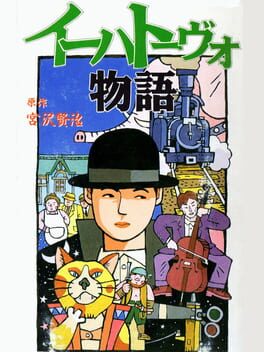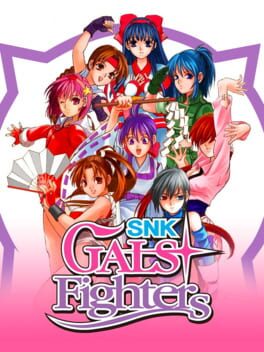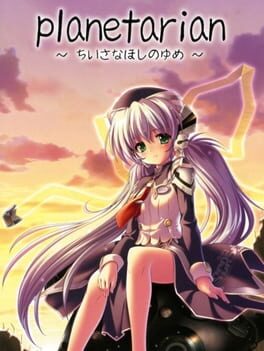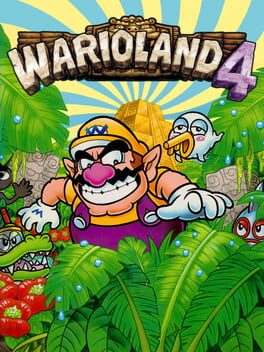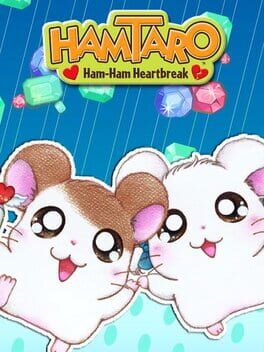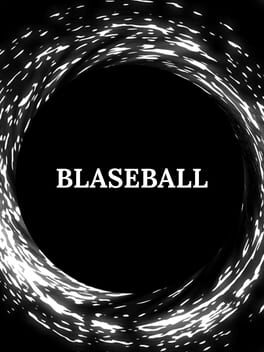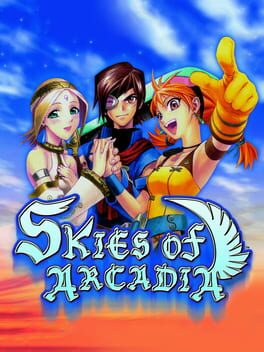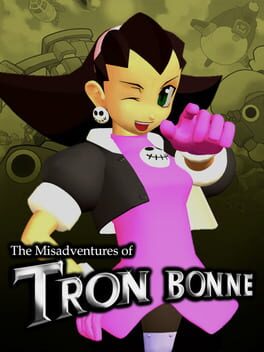cbee63
25 Reviews liked by cbee63
Ihatovo Monogatari
1993
the altruism and warmth of Miyazawa Kenji textured on a few powerful screens. With its slow gaming works, the greatest achievement of Ihatovo Monogatari is not in its formal elements or content, but in knowing how to capture the spirit of a writer and make us travel, for a few hours, to his vision of the world.
SNK Gals' Fighters
2000
Wario Land 4
2001
This is 2d gaming at its finest. Wario’s sprite in this game looks as though he is barely human anymore, transformed into a beast driven by greed. Wario’s beast-like demeanor is reflected in his controls. Wario Land 4 is faster, more aggressive, and overall more bizarre than any of the previous entries in the series. Along with his staple attacks of slamming into, throwing, and ground pounding enemies, Wario was given the ability to charge headfirst by holding R while running, destroying everything in his path. Every attack in this game just feels so satisfying.
Where Wario Land 4 truly shines is in its level design. Each of the worlds, based around a specific theme, are so colorful and distinct. Their over saturated bright colors probably wouldn’t fit into any other franchise, but here they feel right at home. Levels are built around collecting 4 parts of a gem in order to progress to each world’s boss. While some of these gem pieces are pretty straightforward, you will have to go out of your way and explore the levels to find others. Treasure can be hidden, forcing you to use all of your moves at some point, along with special abilities from enemies. These abilities can get absolutely bonkers, ranging from bat Wario to body horror swollen head bee sting Wario. Some of these treasures can genuinely be a challenge to find, but the satisfaction of finding some deep hidden gem pieces is unmatched. Perhaps one of the most exciting features of every level is its ending. At the end of every level, you encounter a frog switch. Upon jumping on this switch, the music switches to an anxiety-inducing techno beat as a timer pops up on the top of the screen. From then on you need you book it back to the beginning of the level before this timer runs out or else you die in an explosion. This forced speed run approach is genius level design. A level that you spent 10 to 15 minutes fully exploring and collecting all of its treasure now must be escaped in only a minute or two at the risk of losing everything.
Wario Land 4 is an amalgamation of pieces that makes it sound like an unfocused mess in concept, but every element of the game comes together so perfectly. It’s a unique power fantasy game combined with puzzles that reward exploring every pixel of each map. Nintendo should be ashamed of themselves for not porting this game to the switch.
Where Wario Land 4 truly shines is in its level design. Each of the worlds, based around a specific theme, are so colorful and distinct. Their over saturated bright colors probably wouldn’t fit into any other franchise, but here they feel right at home. Levels are built around collecting 4 parts of a gem in order to progress to each world’s boss. While some of these gem pieces are pretty straightforward, you will have to go out of your way and explore the levels to find others. Treasure can be hidden, forcing you to use all of your moves at some point, along with special abilities from enemies. These abilities can get absolutely bonkers, ranging from bat Wario to body horror swollen head bee sting Wario. Some of these treasures can genuinely be a challenge to find, but the satisfaction of finding some deep hidden gem pieces is unmatched. Perhaps one of the most exciting features of every level is its ending. At the end of every level, you encounter a frog switch. Upon jumping on this switch, the music switches to an anxiety-inducing techno beat as a timer pops up on the top of the screen. From then on you need you book it back to the beginning of the level before this timer runs out or else you die in an explosion. This forced speed run approach is genius level design. A level that you spent 10 to 15 minutes fully exploring and collecting all of its treasure now must be escaped in only a minute or two at the risk of losing everything.
Wario Land 4 is an amalgamation of pieces that makes it sound like an unfocused mess in concept, but every element of the game comes together so perfectly. It’s a unique power fantasy game combined with puzzles that reward exploring every pixel of each map. Nintendo should be ashamed of themselves for not porting this game to the switch.
Ikaruga
2001
Yeah I don’t think I’m ever making it past stage 2 without continues. Tough as nails old school shmup action with a unique polarity system, allowing you invulnerability to bullets of the same color. This polarity system ensures that there’s no one way to complete any portion of the game. Difficulty is pretty unreasonable at times but that makes it all the more satisfying to survive, plus you can adjust how many lives and continues you get. The visuals are gorgeous and the soundtrack is full of certified bangers. If you’re interested at all in shmups/bullet hells, do yourself a favor and pick this game up.
Blaseball
2020
Skies of Arcadia
2000
Very few games have given me the same sense of childlike wonder that I felt while exploring the world of Skies of Arcadia. From the very start, this game oozes with charm as you’re introduced to its unique setting- a world of fragmented floating islands in the sky. The game opens with its protagonist Vyse, a young and optimistic air pirate aboard his father’s ship. While raiding an imperial ship, Vyse along with his long time friend Aika, rescue a mysterious girl named Fina. It is soon found out that Fina belongs to an ancient civilization sent to collect crystals scattered across the land which possess the ability to summon world-destroying beasts.
In the game’s first several hours, I was pretty underwhelmed. Sure, the setting was unique but the overworld felt quite limited, with the airship unable to navigate through heavy clouds. My main concern was that the world would just be a straight line where navigation was limited to where the game wanted you to go. Along with that, the premise felt like standard jrpg fare. What kept me going were the characters and the hope that the world would eventually open up more. And boy am I glad I stuck with it.
Every town you come across in the game truly feels lived in. While most aren’t massive or offer too much in side quests, the vibrant characters and settings you come across in each town are more than enough to make each of them memorable. As the game progresses, more of the world opens up, with occasional ship upgrades allowing you to progress past previously blocked off areas. This newly found freedom was when the game’s appeal truly clicked for me. Each town contains a Sailor’s Guild branch, which listed off bounties and general locations of landmarks, which you can sell the locations to for some cash. These landmarks, scattered all across the overworld, reward you with a little journal entry, charming little nuggets of additional worldbuilding. While entirely optional, hunting down these landmarks and bounties was some of the most fun I had in the game, truly encouraging exploring every nook and cranny of the world. Without sounding too cliche, these little treasure hunts truly make the player feel like they’re an air pirate.
The characters you meet along the way are just as memorable as the settings. As the game progresses, different members will enter and leave your party, all with their own motives for joining your adventure. I found myself falling in love with each and every character in my crew and being devastated whenever anything bad happened to someone in my party. The main cast throughout the game, Vyse, Aika, and Fina have such a wonderful dynamic that made me thoroughly invested in their adventure even when things got rough.
Speaking of rough, I guess I should talk about the combat. Overall, the turn based combat in this game is by far my least favorite part of the game. Fights in this game come in two flavors: the party-based ground combat and the larger scale ship battles. Most battles take place in the form of the prior and they’re…fine? The combat system is a slight variation of the tried and true turn based jrpg, selecting each character’s actions and waiting your turn as the enemy does their thing. The one major difference is each character’s set of S. moves, a set of actions separate from individual MP that relies on a skill meter shared by the entire party. Individual party members can use up their turn to focus, adding to this meter. While this mechanic is an interesting addition to combat, by late game certain S. moves are so powerful that almost all of my battles consisted of party members spamming focus until I had enough points to use this move and decimate enemies. At its best, the party combat is slightly above average. However, the ridiculously high encounter rate of the Dreamcast version, along with the slow animations of just about each action make fights feel more like an annoyance than anything. The only times I’ve died in this game were from careless mistakes while I shut my brain off in random encounters. The ship battles, occurring only in scripted story events, offered a little variety to combat but were even more of a slog. In these battles, the enemy’s actions are shown during your turn, boiling down to a turn based red light green light of attacking when it’s safe and blocking when it’s dangerous. I can certainly see the combat of this game being a major turn off to some, as it certainly was for me. However, it never got frustrating enough to the point that I wanted to quit. Additionally, the Gamecube port of this game lowers the encounter rate, which I can imagine would drastically reduce the frustration I had with fights. Unfortunately, the dungeons in this game are also pretty lackluster. Although many are visually appealing, their layouts often completely forgettable. The high encounter rates did not help here, as I found myself wanting to get through each dungeon as fast as possible without exploring much. While many are necessary for carrying on the plot, the dungeons often feel like a screeching halt in the pacing of the adventure.
With that negativity out of the way, I need to talk about this game’s presentation. The visuals in this game are gorgeous, even in 2021. Colors in this game’s world are extremely vibrant and lively, truly capturing the light-hearted adventurous tone. Released in an era where studios wanted their games to look as realistic as possible, Skies presents its characters in a more cartoonish anime style, reminiscent of the Mega Man Legends series. This approach allowed for much more expressive faces in each of the characters than if they went with lifeless higher-poly models. I also need to mention this game’s soundtrack. THE SOUNDTRACK. Nearly every track in this game fits its setting perfectly. From the uplifting orchestral arrangement of the overworld theme to the urgency in the string/synth/breakbeat combination of the random encounter theme, this game’s score does not miss once.
I can’t say Skies of Arcadia is a perfect game. It’s flaws are made abundantly clear through it’s dated combat and mediocre dungeons. It’s certainly not a game for everyone and really takes some time to get going. Despite all of this, the game’s lovable cast and lovely world to explore make it a standout experience in a class of its own. If you can put up with some dated jrpg jank, I cannot recommend this game enough.
